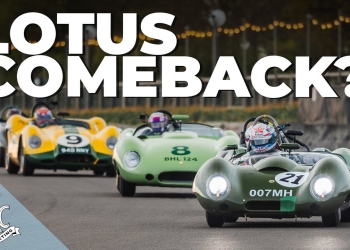Revisiting F1's Watershed Moment: The Richmond & Gordon Trophies at Goodwood Revival
There's something magical about watching vintage Formula 1 cars slice through the rain. The rooster tails of spray, the drivers wrestling with machines that seem to have a mind of their own - it's a sight that takes you back to an era when racing was raw, dangerous, and utterly captivating. The Richmond & Gordon Trophies at Goodwood Revival offer a unique window into one of F1's most pivotal periods. We're talking about the late 1950s, a time when the sport was on the cusp of a revolution that would change its face forever.A Tale of Two Philosophies
Picture this: sleek, powerful front-engined Ferraris and Maseratis lined up on the grid alongside the nimble, innovative rear-engined Lotuses and Coopers. It's not just a race; it's a clash of philosophies, a battle between the old guard and the new wave. The front-engined cars, with their thunderous engines mounted ahead of the driver, were the established kings of the track. They were brutish, demanding beasts that required immense skill and courage to tame. On the other hand, the rear-engined upstarts were rewriting the rulebook. By placing the engine behind the driver, they achieved better weight distribution and handling - a concept that would soon dominate the sport.When the Heavens Opened
Now, throw some good old British weather into the mix. The rain at Goodwood turned this already fascinating contest into something truly spectacular. In these conditions, the strengths and weaknesses of each design were amplified. The front-engined cars, with their massive power, struggled for traction. Watching them power-slide through corners was a sight to behold - part ballet, part controlled chaos. The rear-engined machines, meanwhile, seemed to dance through the spray with a bit more finesse.It's in these moments, when grip is at a premium and every input counts, that you truly appreciate the skill of these drivers.
A Trip Down Memory Lane
For a motorsport enthusiast like myself, events like the Richmond & Gordon Trophies are more than just races. They're time machines. They transport us back to an era when:Click here to preview your posts with PRO themes ››
- Drivers raced without seatbelts or proper safety gear
- Pit stops were leisurely affairs compared to today's blink-and-you'll-miss-it precision
- The sound of engines wasn't muffled by turbochargers and hybrid systems
The Technical Revolution
The shift from front to rear-engined cars in F1 wasn't just a minor tweak - it was a seismic shift. To put it in perspective, imagine if today's teams suddenly started experimenting with, say, six-wheeled cars or ground effect technology again. That's the kind of paradigm shift we're talking about. The rear-engined layout offered numerous advantages:- Better weight distribution
- Improved handling and cornering
- Reduced frontal area, leading to better aerodynamics
The Human Element
What really strikes me about these races is the sheer skill of the drivers. Modern F1 cars are technological marvels, packed with driver aids and sophisticated electronics. These vintage machines? They're analog beasts that demand every ounce of a driver's concentration and skill. In the wet, it's even more apparent. There's no traction control, no fancy differential settings, no radio communication with the pit wall. It's just driver, car, and track - the purest form of motorsport.A Living Museum
Events like the Goodwood Revival serve an important purpose. They're not just about nostalgia or entertainment (though they certainly provide both in spades). They're living, breathing museums that keep the history of motorsport alive.Click here to preview your posts with PRO themes ››
For younger fans who might only know F1 as a high-tech spectacle, seeing these cars in action provides valuable context. It helps them understand the sport's roots and appreciate how it has evolved over the decades.








